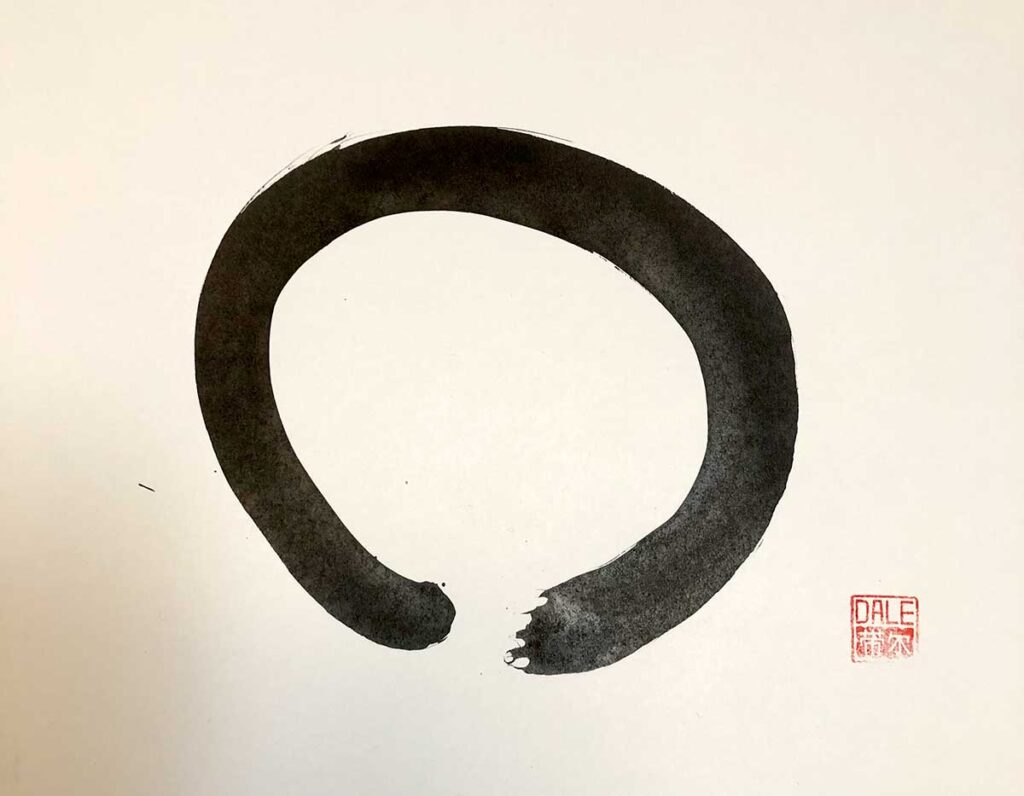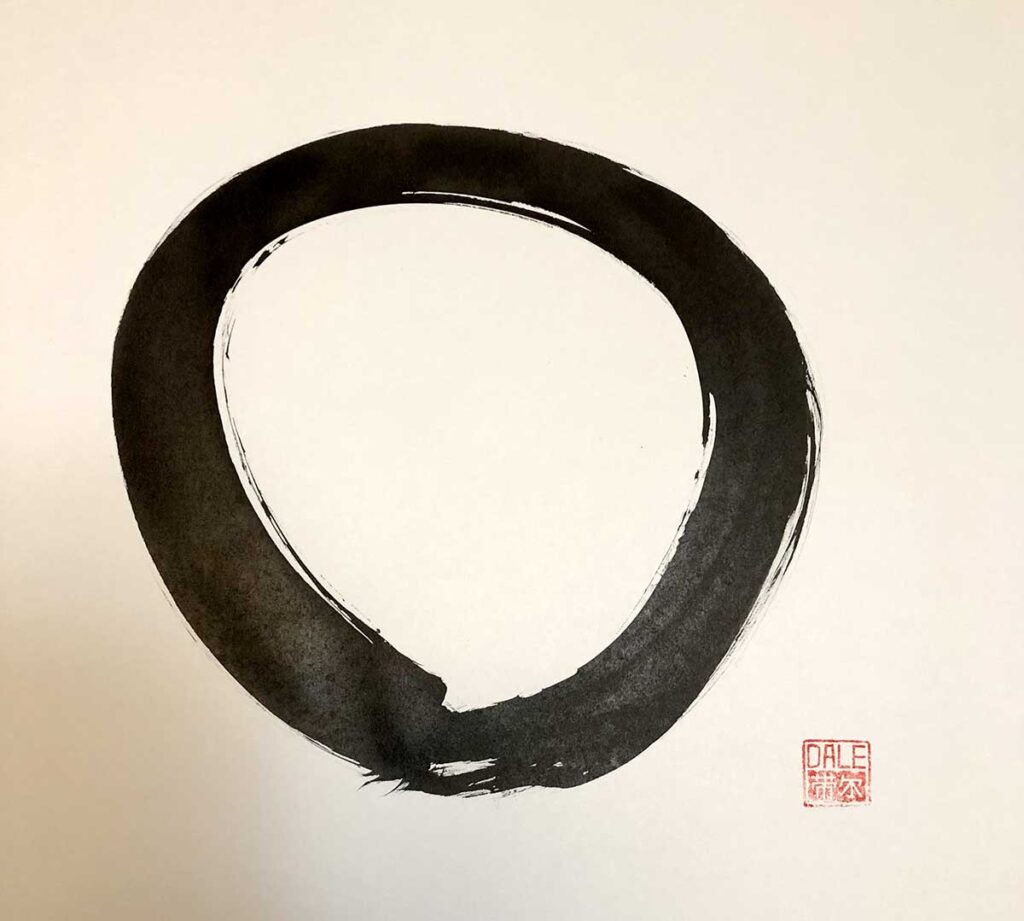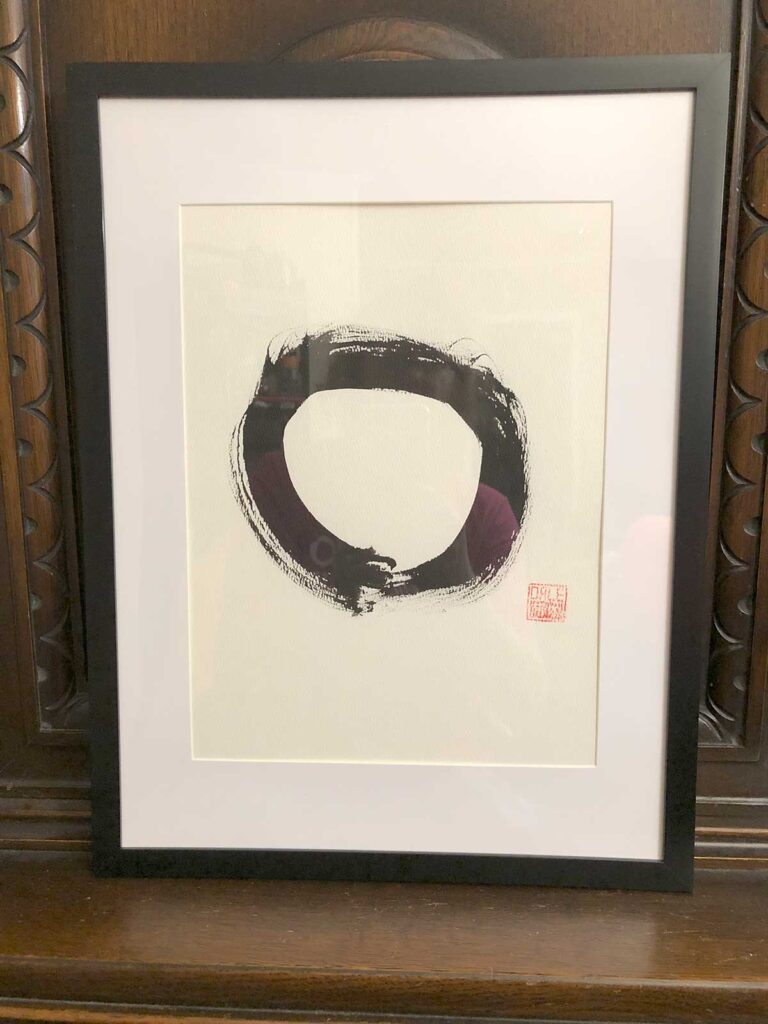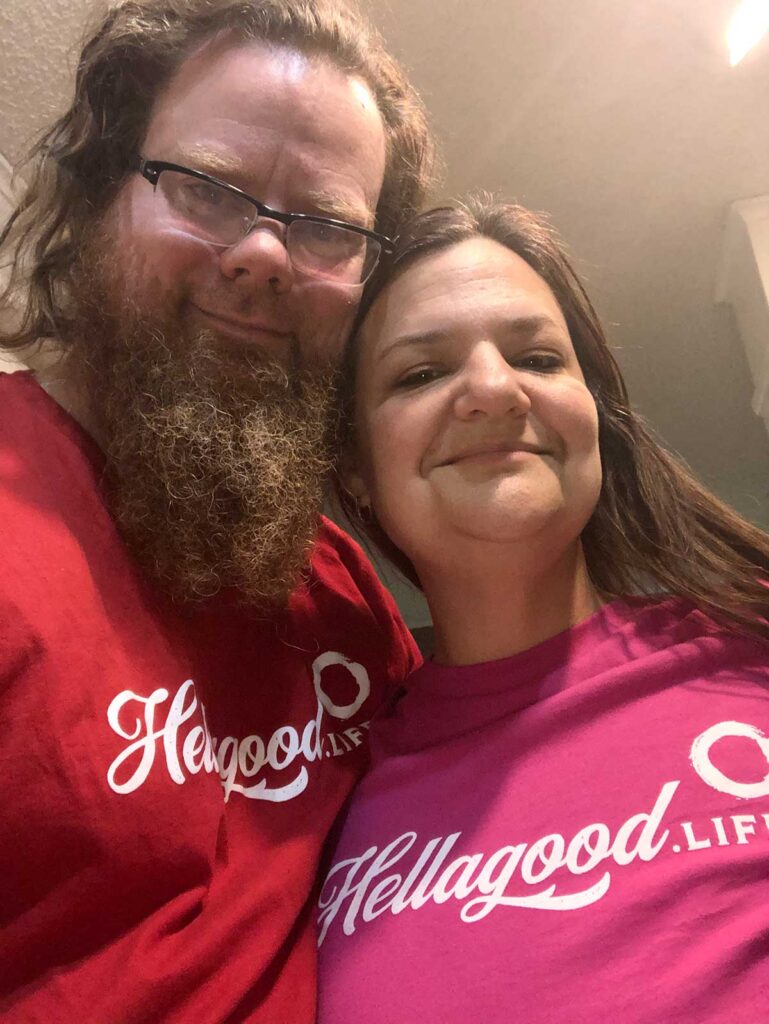As we search to find meaning and purpose in our lives, certain concepts and symbols can help us. One of the most effective and useful ones to me currently is the Ensō Circle. You might have come across it by its many names, including the Zen Circle, Infinity Circle, Japanese Circle, Circle of Enlightenment, or the Lost Symbol of Reiki. Let’s look at the Ensō, what it’s all about, and how it can help us optimize our spiritual, mental, and physical selves in our modern world.
What is the Ensō Circle?

Creating this minimalist Japanese symbol involves drawing out a simple circle shape left unfilled. You will find its origins in Japanese calligraphy and the ensō in Buddhism as an enlightenment tradition or practice, which are the two vehicles that have influenced much of popular eastern philosophies. To the casual observer, the Ensō Circle might seem like a regular painted circle, but it is so much more than that.
In practical terms, the Ensō Circle is brought to life using a black ink wash, known as Sumi, to draw out the figure using a brush on thin, rice paper, the traditional surface for Japanese calligraphy. You can draw out an Ensō Circle practically anywhere, including the dirt or even in the air, with the same internal significance.
The only unalterable constant that must be adhered to when making an Ensō Circle is that the drawing motion must be one (sometimes two) smooth, circular sweep(s) without pauses or breaks. One cannot make any alterations or corrections to it, either once it is done.
As an artist I love this once and done approach. When doing art I often use Sharpie markers or pens as a way to commit to the design I create instead of using a pencil and erasing things to make them “right” or “perfect”. The Ensō is a perfect example of accepting our perfect imperfection. This is great for working on perfectionism!
The Symbolism of the Ensō Circle or The Ensō Circle Meaning…
The Ensō Circle is meant to be drawn out only once and doesn’t allow corrections because the artist’s internal state is the objective representation. Because of this, you won’t find many Zen artists famous for ‘perfect’ Ensō Circle drawings/paintings, no matter how easy it may seem – that’s not the point.
The point of the Ensō Circle is a deeply personal one, representing an individual’s spiritual and mental balance more than anything else. However, the common symbolism behind it and its main significance is its representation of enlightenment or the universe. Depending on the artist’s intentions, you will encounter Ensō Circles left slightly open or entirely closed.
Open Ensō Circle
Open-ended circles allow growth or development, otherwise known as the beauty of imperfection (wabi-sabi). Open ensōs are also known to represent impermanence which is one of my favorite concepts to study these days. This idea helps alleviate suffering. Who doesn’t want that? It is also thought to represent the journey of working towards enlightenment.

Closed Ensō Circle
Closed Ensō Circles typically represent totality, wholeness, the universe, perfection and even enlightenment.

This symbol has many other thoughts or representations like representing…
- infinity
- harmonious cooperation between communities or people
- acceptance of self
- personal development
- continued self-improvement
- strength
- the duality of dependance and independence
- determination
- focus
How does one get the energy in the painting and Why's That important?
Exploring Other Thoughts and Symbolism on the EnsŌ - both ancient and modern References
Relevance of the Ensō Circle in Modern Life
The Ensō Circle holds nothing it does not need, but lacks nothing that it does. The ensō is a very fitting representation of the balance that all human beings should strive to achieve. Sometimes in today’s world we live in extremes which puts us at odds with other people and even with ourself or our best interests at times.
In our working life, personal relationships, physical health, mental state, and the way we interact with all things, living or not, in the world, the qualities that the Ensō represents are useful. It reminds us that we should never lean too far toward one end of the spectrum in any aspect of life. In Buddhism this is often called “the middle way” or “the middle path” that keeps us in a calm state and minimizing suffering.
Whether it’s overworking or laziness, overeating or anorexia/asceticism, frugality or reckless extravagance, celibacy or addiction to sensuality, the idea is to strike a balance that keeps us on an even keel. Just as the ancient Japanese believed that the katana-wielding samurai needed to be masters of the sword and the brush, the same applies to us. In short, this is the true path to living well.
For me, after a year or two of doing of ensō sumi painting or other drawing styles, it’s become an important fixture in my life and fun practice and form of meditation for me. It’s become a form of creativity and art I enjoy creating. Because of all this and it’s idea of living well, it’s also become a part of the definition and graphic representation of the Hellagood Life brand.



Final Thoughts
While some may find ancient traditions and belief systems unsuited to us in modern times, the reality could not be further from the truth. Ancient wisdom holds many lessons for us as we make our way through these difficult times and can be a source of strength, peace, and prosperity.
A few days ago I was reading The Farther Reaches of Human Nature by Abraham Maslow, you know the creator of Maslow’s Hierarchy of Needs. Yeah in his book he was referencing the Tao Te Ching as great philosophies to explore in modern times. Granted he died in 1970, but he was referencing ancient Eastern philosophies from China. The Tao Te Ching is a Chinese classic text written around 400 BC and traditionally credited to the sage Lao Tzu.
My point here is even one of the fathers of modern psychology was influenced by the wisdom from some 3000 years ago. How is that even possible? Sometimes we just need to embrace the wisdom of the past and find ways to apply it into our modern lives.
That’s one of the things I am trying to do here at Hellagood Life – find ways to explore many different experts and much wisdom to offer a modern approach to applying these ideas.
Thanks for joining me on the journey.
Want to try adding mindfulness to your self-care routine to over come those Hellabad Times and create a Hellagood Life? Click below to get details about my latest mindfulness course.
